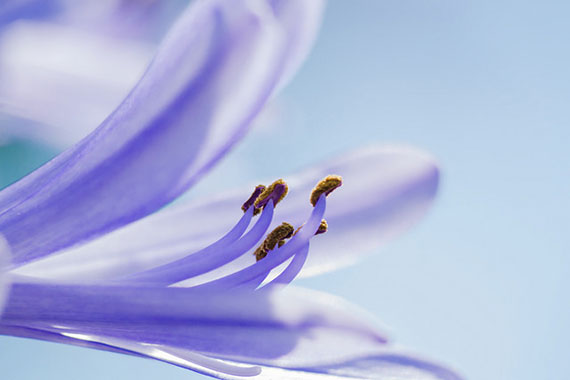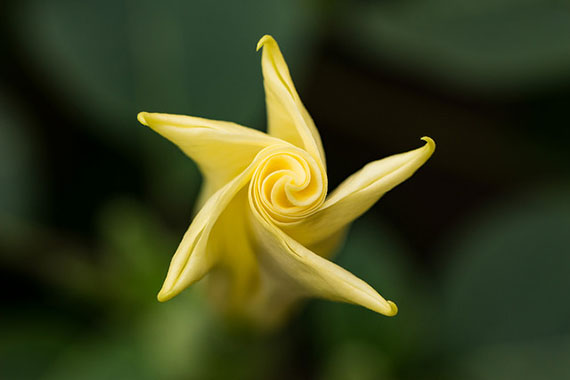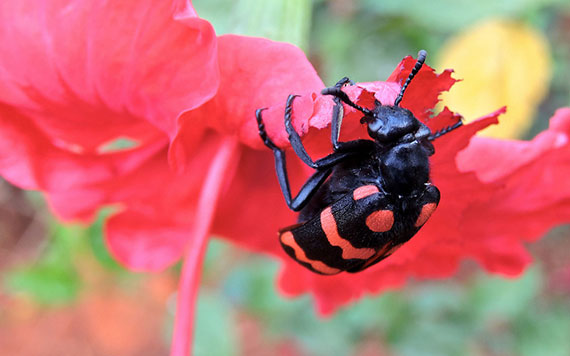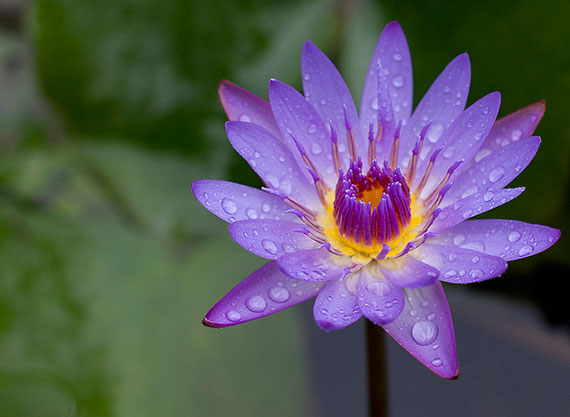Flowers are one of my favorite photography subjects. They can’t complain if the photo doesn’t come out right. Flowers also look very different when shot from different angles and zoom levels. Explore the flower from these varied angles to get completely new photos. While taking photos indoors, the two most important things to keep in mind are lighting and background.

Photo by Yann Cœuru; ISO 400, f/5.6, 1/500-second exposure.
Indoor Flower Photography Tips
Choose a diffused light source, like a large window or multiple lamps to throw light on the flowers. Harsh lighting sources can cause the photograph to look washed out.
Pick an uncluttered background, such as a plain wall. You can even hang a cloth at a distance behind the flowers to get a plain, solid colored background. Make sure that the background is far away from the subject. This ensures that it’s out of focus and also makes sure that no shadows fall on the background.
Chose a narrow depth of field. Keeping the depth of field shallow will reduce the background clutter and draw attention to the flower. Shallow depth of field is achieved by opening up the lens wide.

Photo by Jade; ISO 100, f/4.5, 1/180-second exposure.
Outdoor Flower Photography Tips
Moving around to change the angle of the shot can dramatically change the background. Choose an angle from which the background is far away from the flower itself. Many photographers carry a few plain cloth sheets with them to use as backgrounds.
Carry a macro lens or extension tubes. Macro lenses allow you to get closer to the subject and still focus on them. Extension tubes allow you to reuse your lenses and reduce the minimum focusing distance. Since they don’t have any optical components, they don’t harm the image quality in any way.
Add an insect to the photograph to make it more interesting. The best time to photograph is during early morning since the insects are still inactive due to the night’s cold and dew.

Photo by Fungible Name; ISO 180, f/4.2, 1/30-second exposure.
Rain and dew make flower shots more interesting. Look for flowers with dew drops on them, or just spray some water on them yourself.

Photo by Scott Moore; ISO 200, f/3.2, 1/500-second exposure.
Post-Processing of Flower Photos
You can always post-process the photo to enhance it. Some of the common post processing techniques used in flower photos are cropping the photograph, increasing saturation to give richer colors, increasing contrast and brightness, and adding vignetting effects. Vignetting is the dark shadows on the corners of a photograph’s frame, often caused by the lens. Adding vignetting moves the eye to the center of the photograph.
About the Author:
This article was written by Tushit Jain from TwistedTripod, a place for learning photography and sharing your best photographs, travel stories, destinations, and occasionally stuff from another life.
Go to full article: How to Take Amazing Flower Photos
What are your thoughts on this article? Join the discussion on Facebook
PictureCorrect subscribers can also learn more today with our #1 bestseller: The Photography Tutorial eBook
The post How to Take Amazing Flower Photos appeared first on PictureCorrect.
from PictureCorrect https://ift.tt/2FDoGHs
via IFTTT






0 kommenttia:
Lähetä kommentti